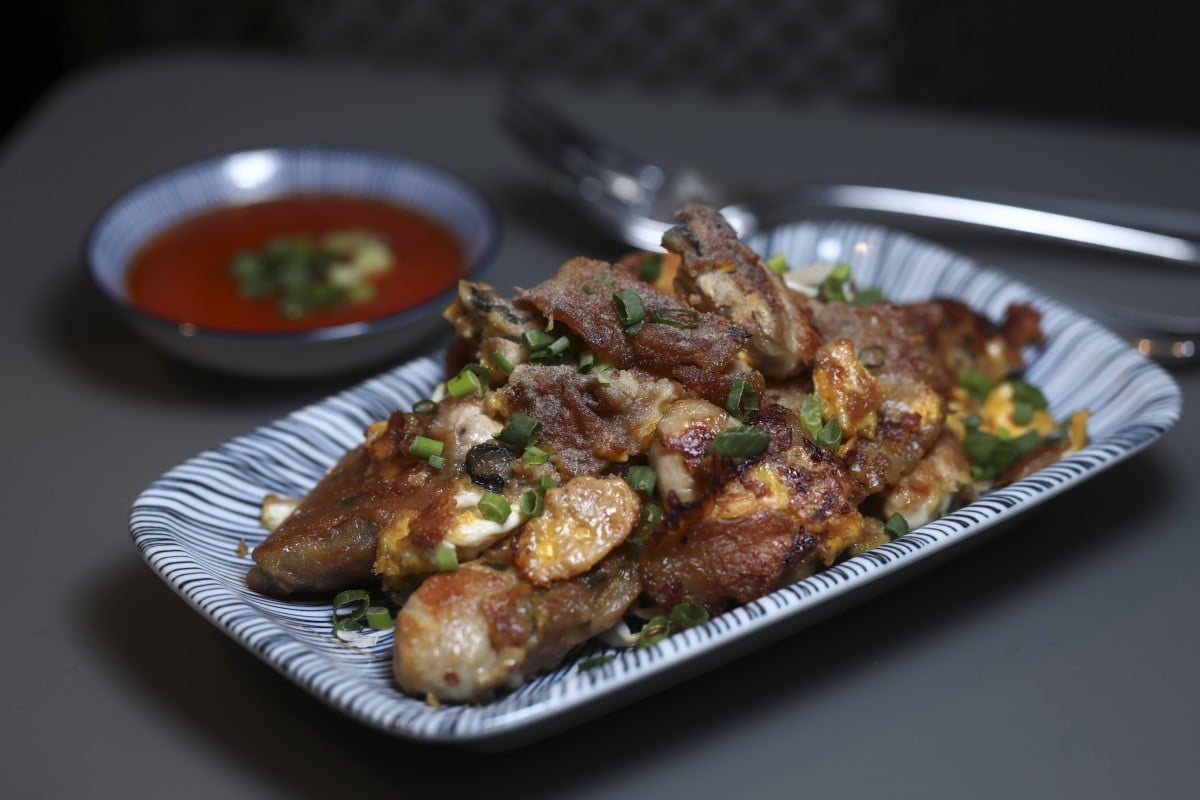
Oyster omelette, also called oyster pancake, differs according to where you eat it, and from cook to cook.
In Singapore and Taiwan, it tends to be sticky and stretchy due to the addition of sweet potato starch; in other places, the oysters are barely held together by the most delicate of batters, and they are deep-fried, rather than pan-fried. Sometimes, the tiniest baby oysters are used, while other cooks choose plumper, larger and more succulent oysters that are about 3cm (1¼ in) long.
Restaurants tend to serve neat, perfectly circular oyster omelettes while the street-food versions made by hawkers – who often cook several orders at once on a large flat griddle – can look a little messy, even if they are just as delicious. My version looks more like the hawker omelettes.
An un-enamelled cast-iron skillet is the best pan for getting the desired crisp edge and bottom of the omelette, which contrasts with the soft interior. The crispness is harder to achieve using a non-stick skillet. It is important that you don’t crowd the pan; I make mine one at a time in a 30cm (12 in) skillet. If you are serving more than one person, and you want to eat at the same time, use two skillets or a large griddle.
This version was taught to me by Tass, an excellent Thai cook. It doesn’t contain sweet potato starch (also called sweet potato flour), although you can add it if you like – use it sparingly, in place of some of the cornstarch. Tass says that in Thailand, the omelette is usually made with mussels, and it’s called hoi tod (fried mussels). I prefer it with oysters.
The recipe uses Gogi or Kogi powder - Thai brands of tempura flour that are different from Japanese tempura flour. Buy the plain, unflavoured Gogi/Kogi powder. If you can’t find this powder, use plain (all-purpose) flour.
I use frozen oysters that are about 3cm (1¼ in) long, but if you don't mind the higher cost, you can also use small fresh oysters.
Mince the spring onions. Rinse the oysters with cold water, then drain in a colander before drying them with paper towels.
Put the cornstarch, rice flour and Gogi/Kogi powder (or plain/all-purpose flour) into a bowl and whisk to combine.
Put 100ml (¼ cup and 2 tbsp and 2 tsp) of cold water into a measuring cup and stir in the soy sauce, oyster sauce, sugar and white pepper.
Pour the liquid ingredients over the dry ingredients and stir briefly. Add half of the spring onion and all of the oysters.
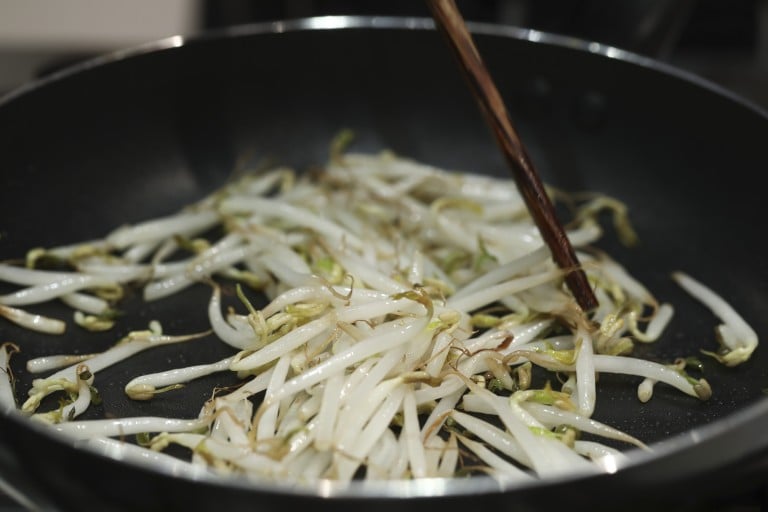
Place a lightly oiled 30cm (12 in) skillet over a medium-low flame. When the pan is hot, add the bean sprouts and about 5ml of water. Stir to combine, then spread the bean sprouts over the skillet. Cook for about 90 seconds, or until warmed through but still crisp, stirring occasionally. Put the bean sprouts onto a serving plate.
Pour about 60ml (¼ cup) of oil into the skillet (no need to wash it) and heat it over a medium-low flame. Spoon a little of the batter into the pan – if it starts to sizzle immediately, the oil is hot enough.
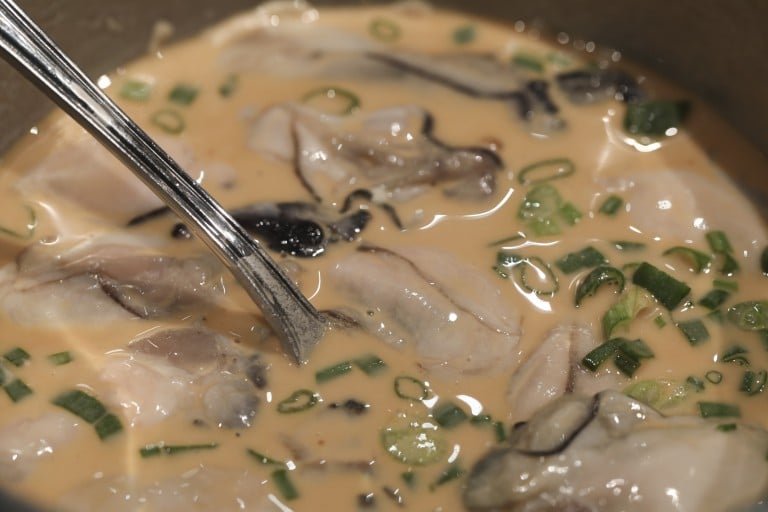
Stir the batter briefly, then pour it into the skillet, distributing the oysters evenly. Adjust the flame so the batter is sizzling at the edges. Let it cook undisturbed for about two minutes, or until the edges are browning.
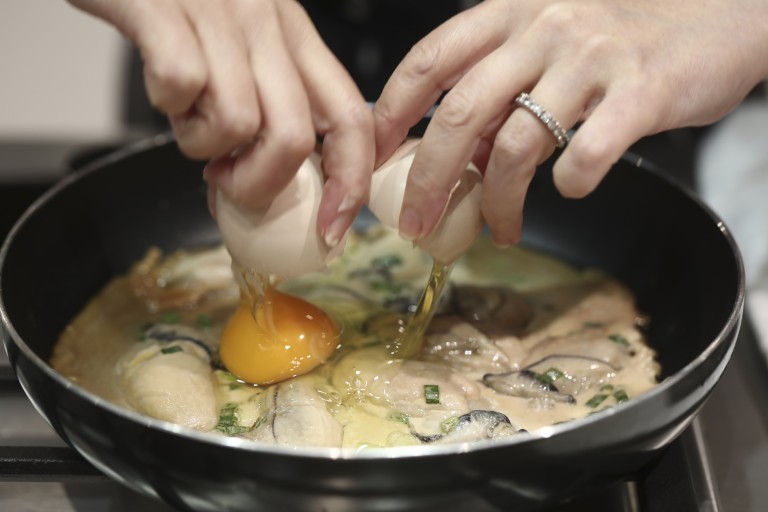
Crack the egg and place it in the centre of the pancake. Use chopsticks to break the yolk and mix it lightly into the white. Spread the egg over the pancake – it will be uneven, but that’s fine.
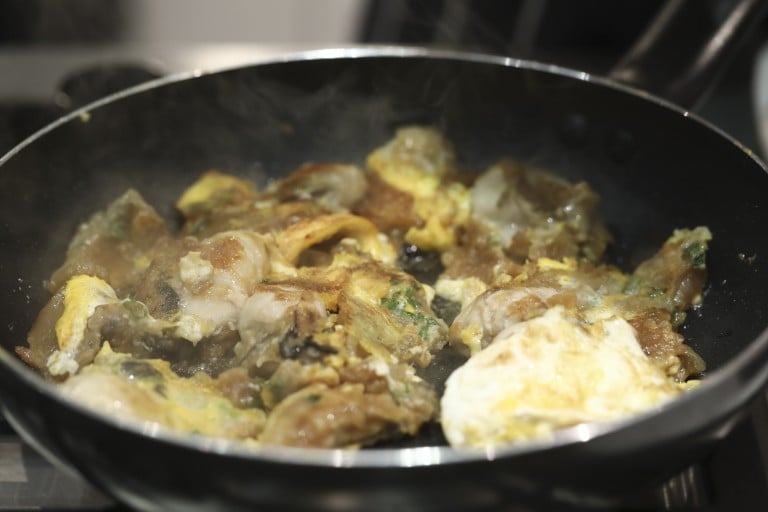
Use a wide metal spatula, such as a pancake or fish turner, to loosen the omelette from the pan – if the bottom is cooked enough, it should come away easily. Use the spatula to break up the omelette into four to six smaller pieces and cook for another minute.
Flip over the pieces so the egg side is down. Cook for about two more minutes, moving the pieces around and adding more oil, if necessary.
When the egg side of the omelette is medium-golden in spots, flip the pieces one more time and cook until the bottom is crisp and medium-golden. The omelette should cook for about five to six minutes, in total.
Lift the omelette pieces out of the pan and stack them on top of the bean sprouts. Sprinkle lightly with white pepper, then scatter most of the remaining spring onion on top.
In a small serving bowl, mix together the sauce ingredients, then sprinkle with the last of the spring onion. Serve the omelette with the sauce on the side.